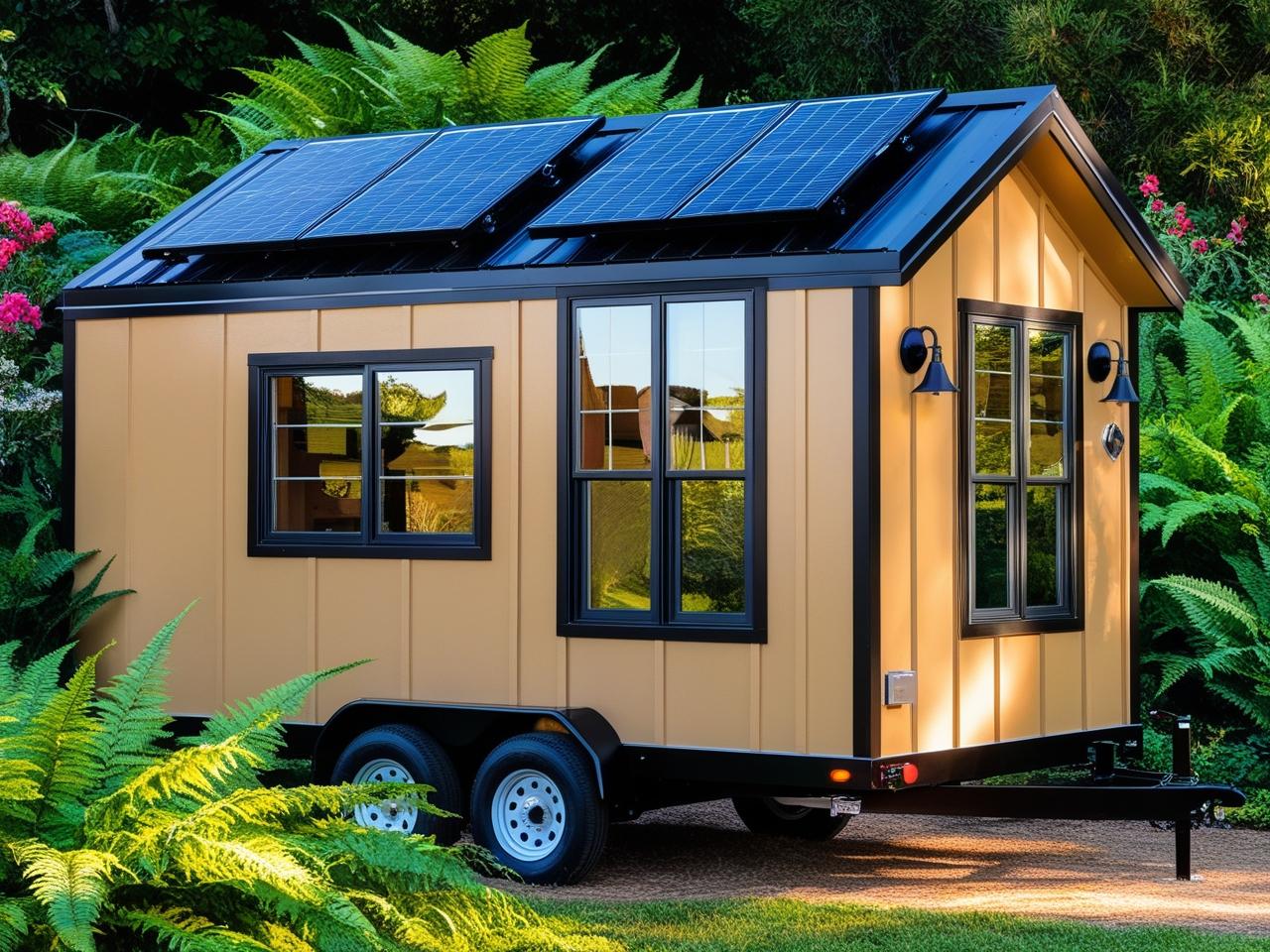Eco Friendly
Energy-Efficient Tiny Homes: Tips to Lower Your Carbon Footprint

Embracing the tiny home lifestyle offers a unique opportunity to minimize environmental impact while maximizing efficiency and simplicity. Due to their compact size, tiny homes inherently consume fewer resources, but implementing specific energy-efficient strategies can further reduce your carbon footprint. Here are practical tips to enhance the sustainability of your tiny home:
1. Optimize Insulation and Air Sealing
Proper insulation and air sealing are crucial for maintaining comfortable indoor temperatures and reducing energy consumption. High-quality insulation materials prevent heat loss during winter and keep your home cool in summer. Conducting a home energy audit can identify areas that need improvement, ensuring your tiny home remains energy-efficient year-round. The Spruce
2. Install Energy-Efficient Windows and Doors
Windows and doors are common sources of energy loss. Upgrading to Energy Star-certified windows can prevent up to 30% of heat or air conditioning loss, enhancing comfort and reducing utility bills. truformtiny.com+5nestron.house+5Instructables+5EcoWatch
3. Utilize LED Lighting
Switching to LED light bulbs can significantly decrease energy usage, as they consume up to 90% less energy than traditional incandescent bulbs. This simple change not only lowers electricity bills but also reduces the frequency of bulb replacements. The Spruce+1EcoWatch+1EcoWatch
4. Invest in Energy-Efficient Appliances
Choose appliances with high energy efficiency ratings to minimize electricity consumption. Look for Energy Star-certified appliances, which meet stringent energy efficiency guidelines set by the U.S. Environmental Protection Agency. These appliances perform as well as or better than their less efficient counterparts while using less energy. truformtiny.com
5. Incorporate Renewable Energy Sources
Harnessing renewable energy, such as solar power, can drastically reduce reliance on fossil fuels. Installing solar panels on your tiny home can provide a sustainable and cost-effective energy solution, decreasing your carbon footprint and offering long-term savings. EcoWatch
6. Implement Efficient Heating and Cooling Systems
Due to limited space, tiny homes can benefit from compact and efficient heating and cooling solutions. Options like mini-split heat pumps offer both heating and cooling capabilities with high energy efficiency. Additionally, using window coverings to control ambient light can help maintain comfortable indoor temperatures during different seasons. Tiny Home InspirationLennox Heating & Cooling
7. Conserve Water with Low-Flow Fixtures
Installing low-flow showerheads and faucets reduces water consumption, which in turn decreases the energy required for water heating. Simple habits like taking shorter showers can further contribute to water and energy savings. nestron.house
8. Embrace Passive Solar Design
Design your tiny home to take advantage of natural sunlight for heating and lighting. Strategically placing windows and choosing appropriate shading can reduce the need for artificial lighting and mechanical heating, enhancing overall energy efficiency.
9. Use Sustainable Building Materials
Opt for eco-friendly and recycled materials during construction or renovation. Materials like reclaimed wood, bamboo, and recycled metal not only reduce environmental impact but also add unique character to your tiny home.
10. Monitor and Manage Energy Usage
Utilize smart home technology to track and control energy consumption. Smart thermostats, energy monitors, and programmable lighting systems allow you to optimize energy use based on your lifestyle and preferences.
FAQs
Q: How much can I reduce my carbon footprint by living in a tiny home?
A: Living in a tiny home can significantly reduce your carbon footprint. For instance, a typical single-family home can emit up to 28,000 pounds of carbon dioxide annually, whereas a tiny house may emit approximately 2,000 pounds per year. Keep Mass Beautiful+1undecidedmf.com+1
Q: Are solar panels a viable option for tiny homes?
A: Yes, solar panels are an excellent option for tiny homes. Their compact size requires less energy, making it feasible to meet most or all energy needs through solar power, depending on your location and energy consumption habits.
Q: What are some cost-effective ways to improve energy efficiency in my tiny home?
A: Simple and cost-effective measures include sealing drafts, adding insulation, switching to LED lighting, and installing low-flow water fixtures. These improvements can lead to substantial energy savings with a relatively low investment.
Q: Can I install a traditional HVAC system in my tiny home?
A: Traditional HVAC systems are often too large and inefficient for tiny homes. Compact systems like mini-split heat pumps or radiant floor heating are more suitable, providing effective climate control without occupying excessive space or consuming excessive energy. Tiny Home Inspiration
Q: How does the orientation of my tiny home affect its energy efficiency?
A: Proper orientation can maximize natural light and passive solar heating, reducing the need for artificial lighting and mechanical heating. Positioning your home to take advantage of the sun’s path can enhance energy efficiency and indoor comfort.
By implementing these strategies, you can create a tiny home that not only embodies simplicity and minimalism but also champions sustainability and energy efficiency. Embracing these practices contributes to a healthier planet and a more sustainable future.
